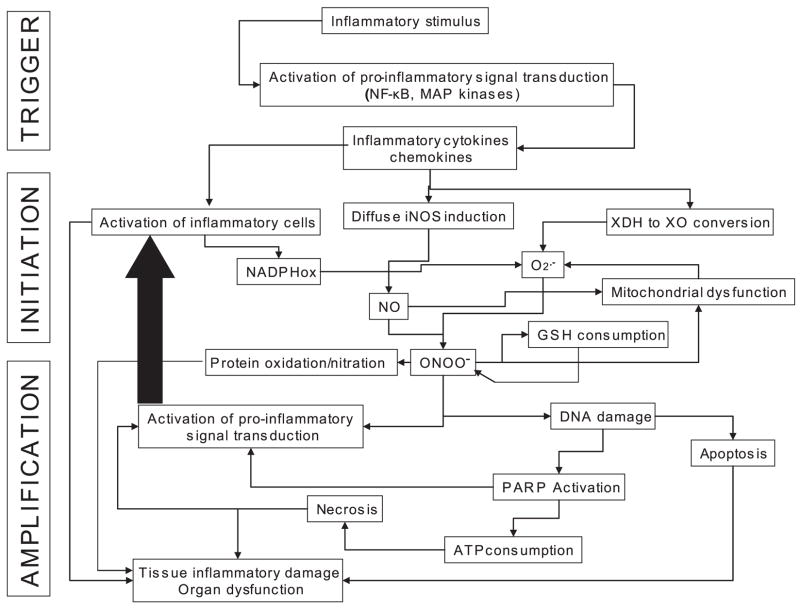FIG. 14.
Mechanisms of amplification of inflammation by peroxynitrite. Inflammation is triggered by the activation of multiple signaling cascades culminating in the upregulated production of an array of proinflammatory cytokines and chemokines. Those initiate a more complex inflammatory reaction characterized by the activation of inflammatory cells and the stimulated activity of enzymes, including inducible NO synthase (iNOS), which produces high amounts of NO, and the superoxide (O2•−)-producing enzymes NADPH oxidase (NADPHox) and xanthine oxidase (XO). The simultaneous production of NO and O2•− results in the generation of peroxynitrite (ONOO−), which in turn damages target molecules including proteins, glutathione (GSH), mitochondria, and DNA. DNA damage can initiate apoptotic cell death and is also the obligatory trigger for the activation of poly(ADP-ribose) polymerase (PARP), which may induce cell necrosis by ATP depletion. Both ONOO− and PARP further participate to the upregulation of proinflammatory signal transduction pathways, thereby producing a self-amplifying cycle of inflammatory cell injury, as indicated by the black arrow.

